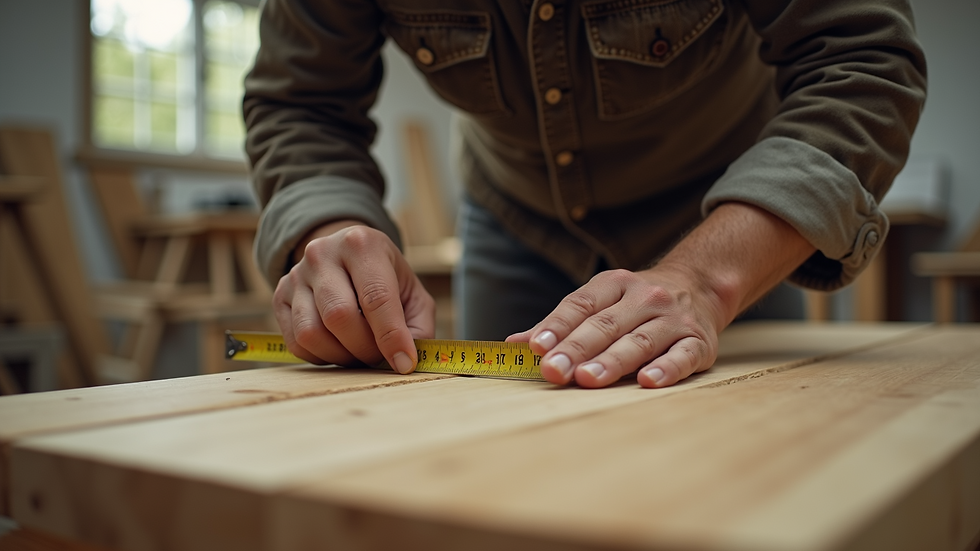Antique Furniture Restoration Guide
- charlesking742
- Oct 6
- 3 min read
Restoring antique furniture requires skill, patience, and the right techniques. I focus on practical steps that bring old pieces back to life. This guide covers essential methods, costs, and tips for restoring furniture with care. Whether you have a family heirloom or a vintage find, these techniques help preserve value and beauty.
Essential Antique Furniture Techniques
Restoration starts with understanding the piece. Identify the wood type, finish, and any damage. This knowledge guides your approach.
Cleaning is the first step. Use mild soap and water or a specialized cleaner. Avoid harsh chemicals that strip the finish. Clean gently with a soft cloth.
Repairing structural damage comes next. Tighten loose joints with wood glue or clamps. Replace missing parts with matching wood. Sand rough edges lightly to blend repairs.
Refinishing requires care. Strip old varnish or paint with a safe remover. Sand the surface evenly. Apply stain or paint in thin coats. Finish with a protective sealant like wax or lacquer.
Upholstery restoration often accompanies furniture repair. Replace worn fabric with quality materials. Use padding to restore comfort. Secure fabric tightly with staples or tacks.
These antique furniture techniques maintain the piece’s character. Avoid over-restoring, which can reduce value. Aim for a natural, well-cared-for look.

Tools and Materials Needed for Restoration
Having the right tools makes restoration easier and more effective. Here is a list of essentials:
Soft cloths and brushes for cleaning and dusting
Wood glue and clamps for joint repairs
Sandpaper in various grits (120 to 400)
Paint stripper or varnish remover
Wood stain or paint matching the original finish
Protective sealants like wax, lacquer, or polyurethane
Staple gun and upholstery tacks for fabric work
Replacement fabric and padding for upholstery
Use quality materials to ensure durability. Cheap products can damage antiques or wear out quickly.
Safety gear is important. Wear gloves, masks, and work in a well-ventilated area. Some chemicals and dust can be harmful.

How much does it cost to restore a piece of furniture?
Costs vary depending on the piece’s condition and the work needed. Simple cleaning and minor repairs may cost a few hundred dollars. Extensive repairs, refinishing, and upholstery can run into the thousands.
Factors influencing cost:
Type of wood and finish - Rare woods or finishes require special care.
Extent of damage - Structural repairs and missing parts increase costs.
Upholstery needs - Fabric replacement and padding add to expenses.
Labour - Skilled craftsmanship demands higher fees.
For Sydney residents and businesses, professional restoration services offer reliable pricing. They provide detailed quotes after assessing the furniture.
Investing in quality restoration protects your piece’s value. It also ensures the furniture lasts for generations.

Step-by-Step Restoration Process
I follow a clear process to restore antique furniture efficiently:
Assessment - Examine the piece thoroughly. Note damage, finish type, and upholstery condition.
Cleaning - Remove dirt and grime carefully.
Disassembly - Take apart removable parts for easier access.
Repairs - Fix joints, replace missing wood, and fill cracks.
Sanding - Smooth surfaces without removing too much original material.
Refinishing - Apply stain or paint in thin, even layers.
Sealing - Protect the finish with wax or lacquer.
Reupholstery - Replace fabric and padding if needed.
Reassembly - Put the piece back together securely.
10. Final inspection - Check for stability and finish quality.
Each step requires attention to detail. Rushing can cause mistakes or damage.
Tips for Maintaining Restored Furniture
Restoration is only part of the process. Proper maintenance keeps furniture looking great.
Dust regularly with a soft cloth.
Avoid direct sunlight to prevent fading.
Use coasters and mats to protect surfaces.
Polish wood occasionally with quality wax.
Address spills immediately to avoid stains.
Inspect joints and upholstery yearly for wear.
Following these tips extends the life of your restored furniture. It also preserves the investment made in restoration.
For those seeking expert help, antique furniture restoration services in Sydney offer tailored solutions. They combine experience with quality materials to deliver lasting results.
Restoring antique furniture is rewarding. It preserves history and adds character to any space. With the right techniques and care, your furniture can remain beautiful for decades.



Comments